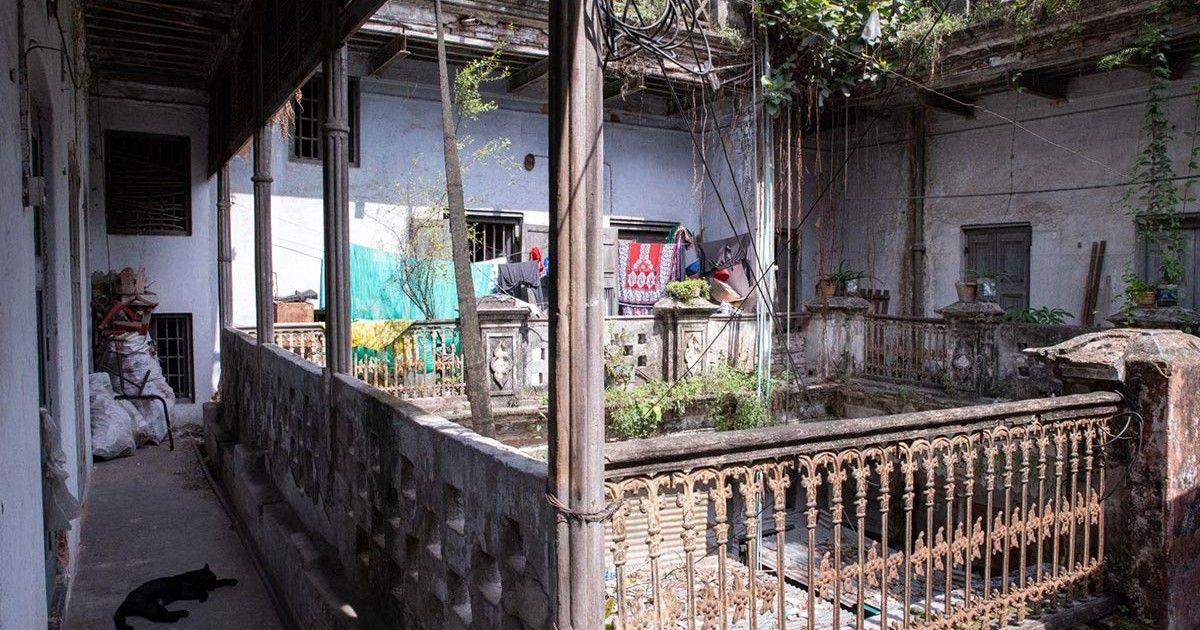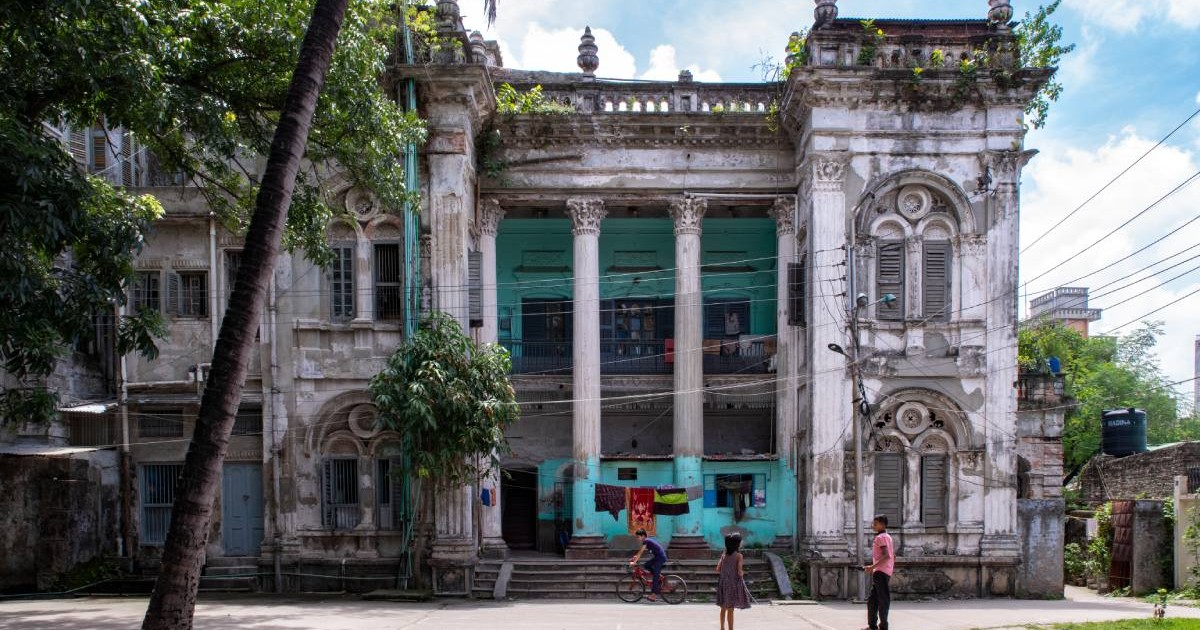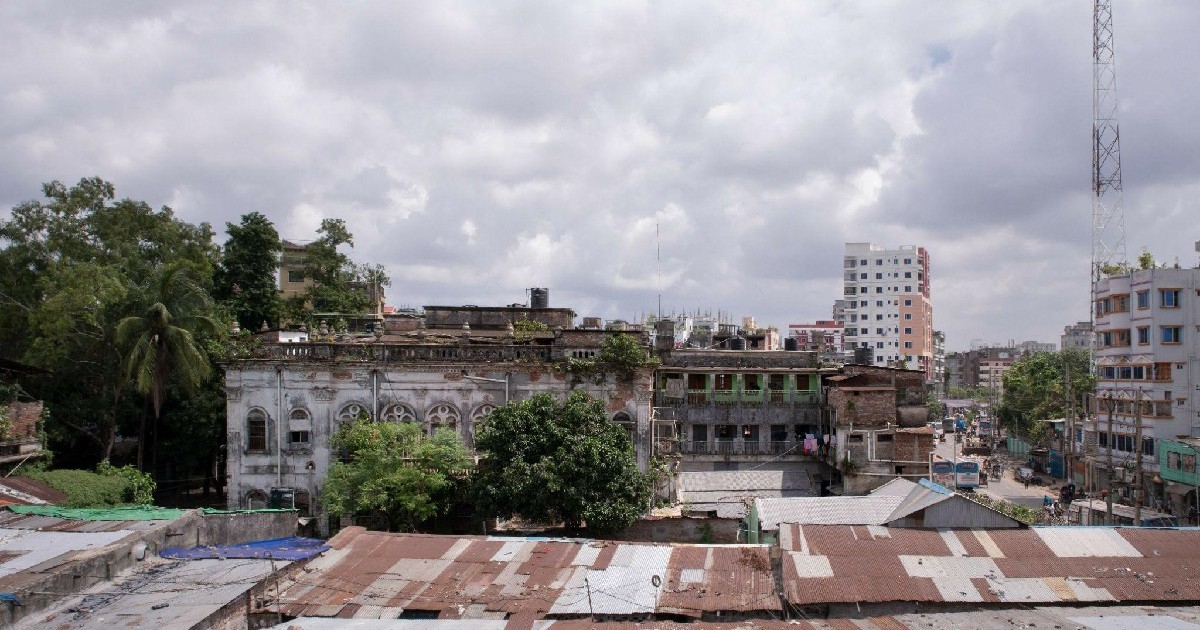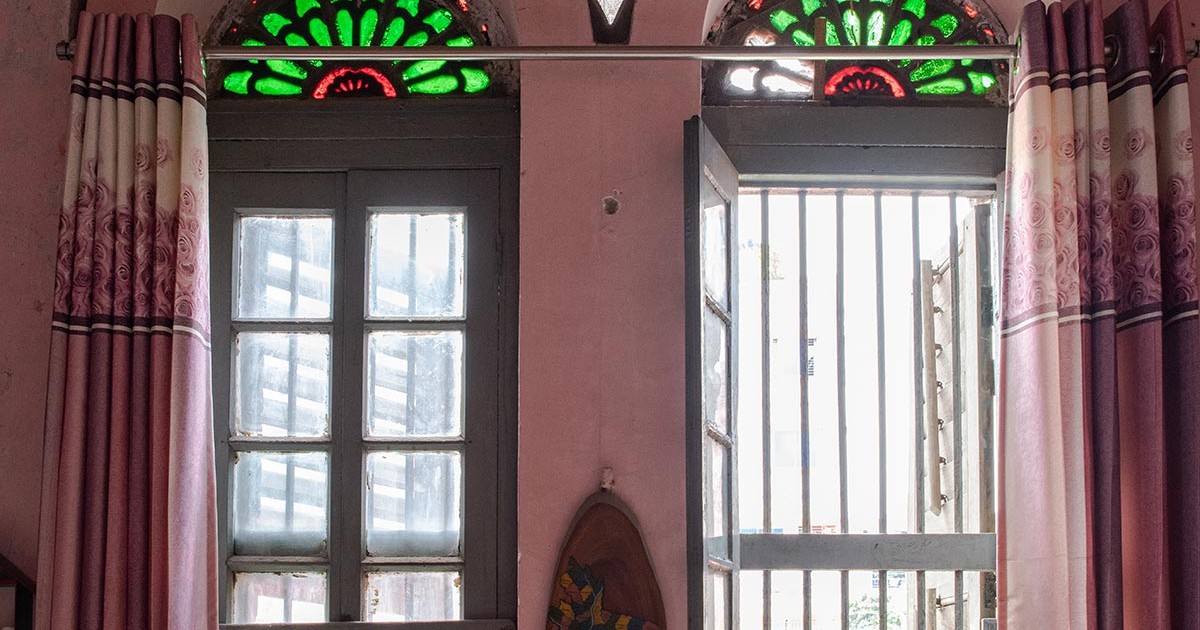In Revati Mohan House, there are three inner courtyards. The courtyards are instrumental in providing a pleasant and comfortable living environment in a hot and humid climate like the one in Bangladesh. Additionally, the majority of the house has a depth of a single room, and a verandah for proper cross ventilation.
Revati Mohan’s House was primarily accessible from the eastern side through a portico. At the entrance, there is an extended foyer which guides the path of visitors either to the living room or to the staircase on the west.
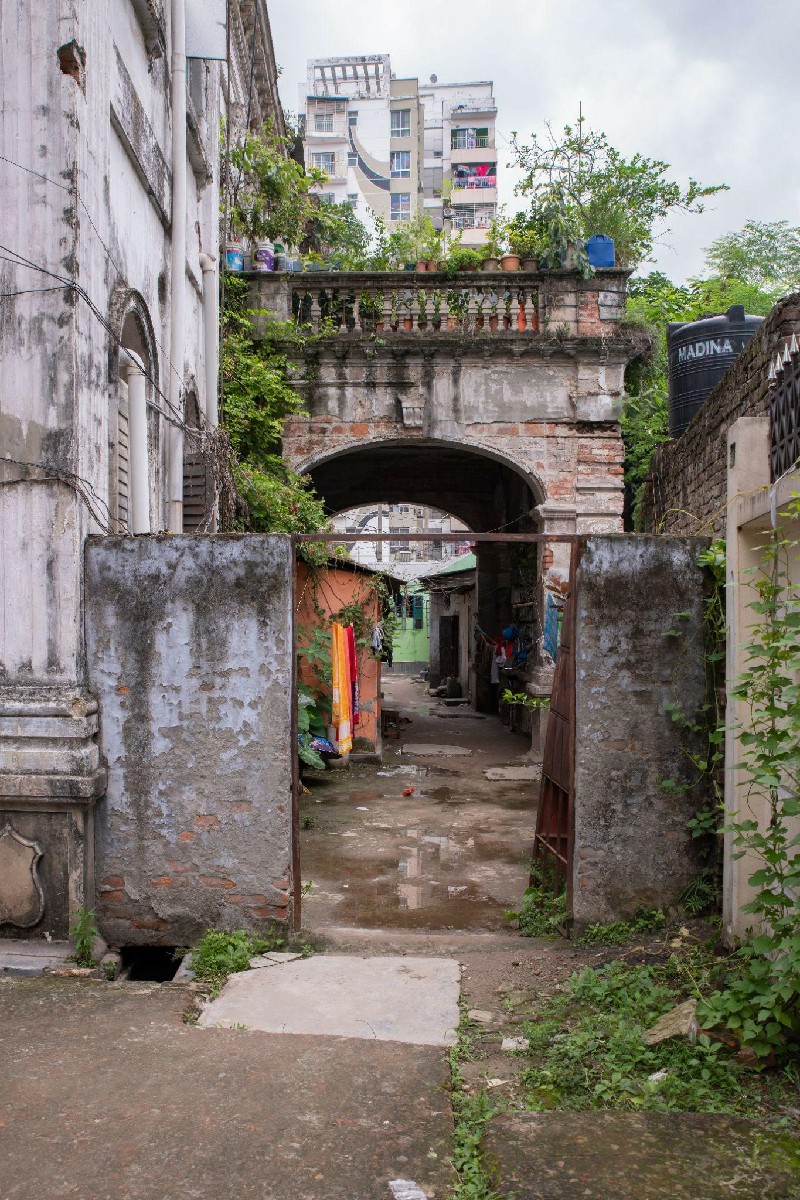 The portico on the eastern side of the house |
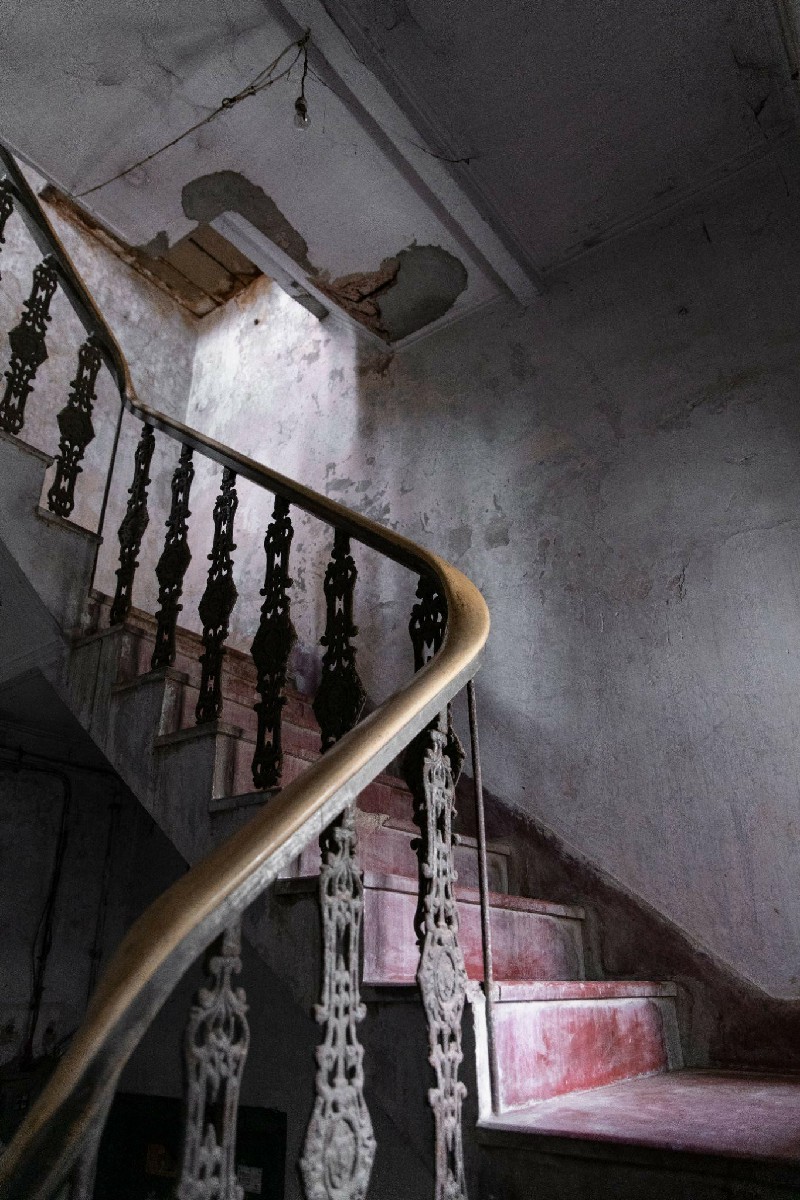 Staircase on the west |
The three- storied building on its northern side, which was supposedly built by his successor Ray Bahadur Satyendranath Das, also has western frontage of 50 feet height, and consists of approximately the same number of rooms. Similar to the southern wing, this part of the building block also has an inner courtyard, and with the canal Dholai Khaal on the east, it provides access to a ghat.
 Three storied building on the northern wing |
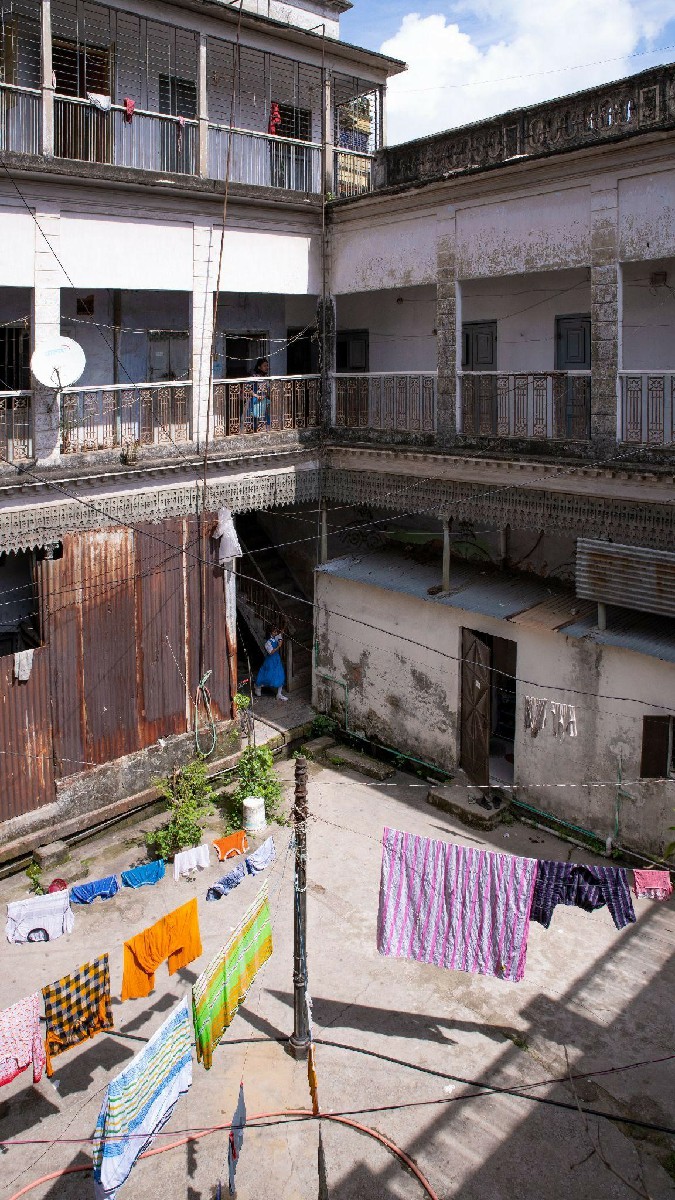 Inner courtyard of the north wing |
All bedrooms and terraces of the houses were designed with an orientation towards the canal, Dholai Khaal. In addition to that, all bedrooms in Revati Mohan House were planned and designed around the two interior courtyards. This arrangement helped create a hierarchy of spaces, which ensured privacy necessary for the internal affairs and daily activities of the house, which was the norm in other Zamindar houses of that time period.
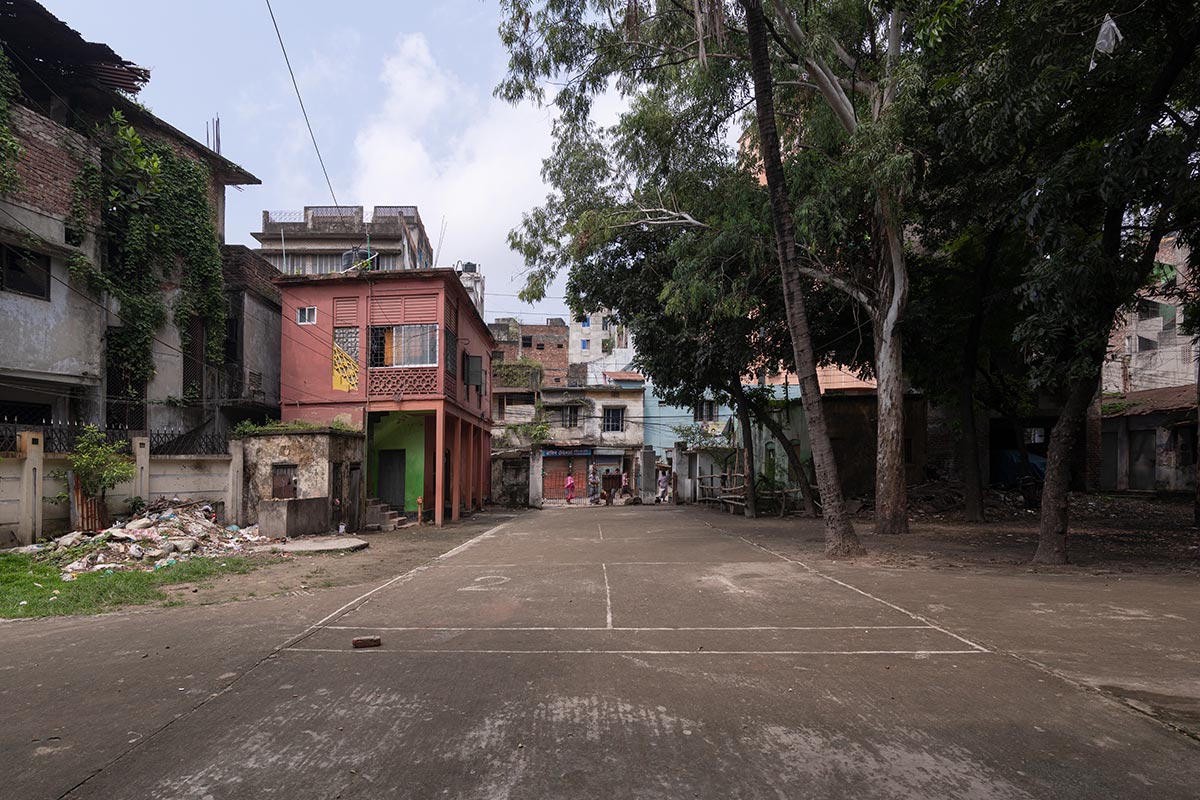
The outer courts of the house may have been utilized for community meetings or significant social or political announcements. In this case the outer court in front of the south wing of Rebutimohan was used as a significant space for local meetings of the neighborhood, Sutrapur. This court also served as a functional space for religious purposes. A temple on the north western edge of Revati Mohan House organized seasonal prayer sessions or pujas, which were attended both by the general public as well as occupants of the house.
The court was also used for secular purposes such as birthdays, weddings, and even funerals. Weddings of both Hindu and Muslim customs and traditions were celebrated in this court with equal importance and meaningfulness. For Muslim weddings, segregation of space was required for men and women. This is where the multiple courts of the house were utilized.

